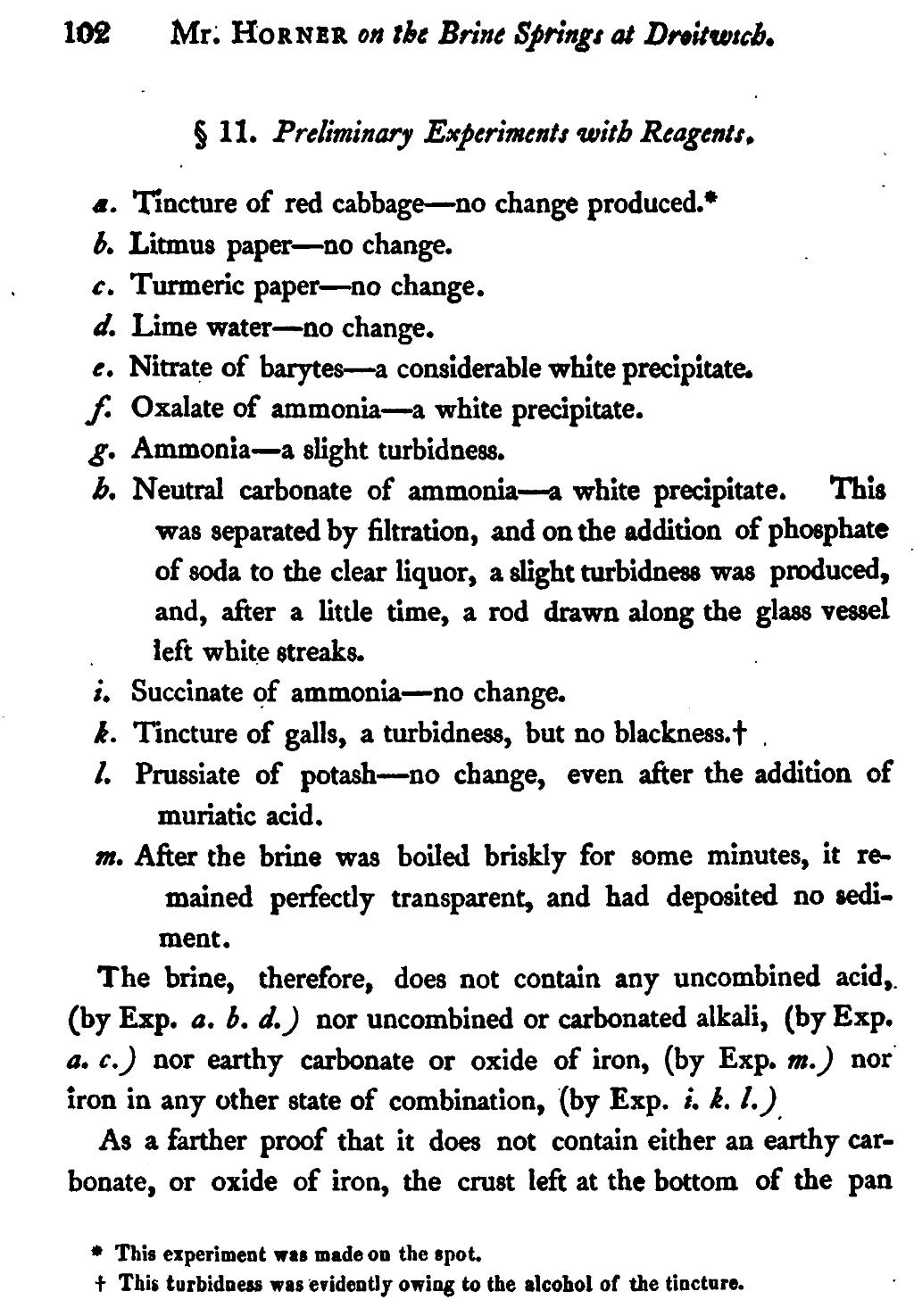§ 11. Preliminary Experiments with Reagents.
a. Tincture of red cabbage—no change produced.[1]
b. Litmus paper—no change.
c. Turmeric paper—no change.
d. Lime water—no change.
e. Nitrate of barytes—a considerable white precipitate.
f. Oxalate of ammonia—a white precipitate.
g. Ammonia—a slight turbidness.
was separated by filtration, and on the addition of phosphate of soda to the clear liquor, a slight turbidness was produced, and, after a little time, a rod drawn along the glass vessel
left white streaks.i. Succinate of ammonia—no change.
k Tincture of galls, a turbidness, but no blackness.[2]
The brine, therefore, does not contain any uncombined acid, (by Exp. a. b. d.) nor uncombined or carbonated alkali, (by Exp. a. c.) nor earthy carbonate or oxide of iron, (by Exp. m.) nor iron in any other state of combination, (by Exp. i. k. l.)
As a farther proof that it does not contain either an earthy carbonate, or oxide of iron, the crust left at the bottom of the pan
